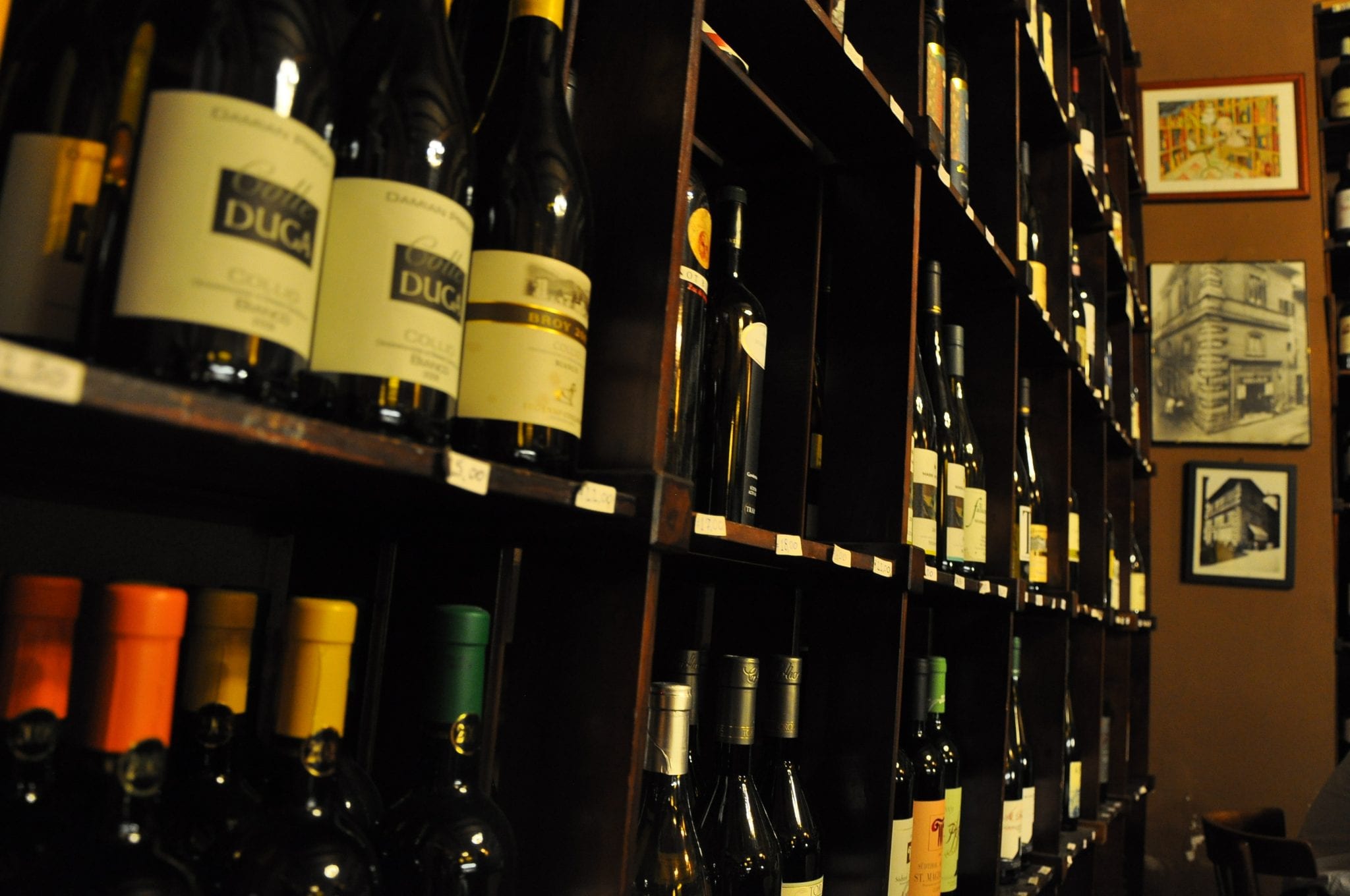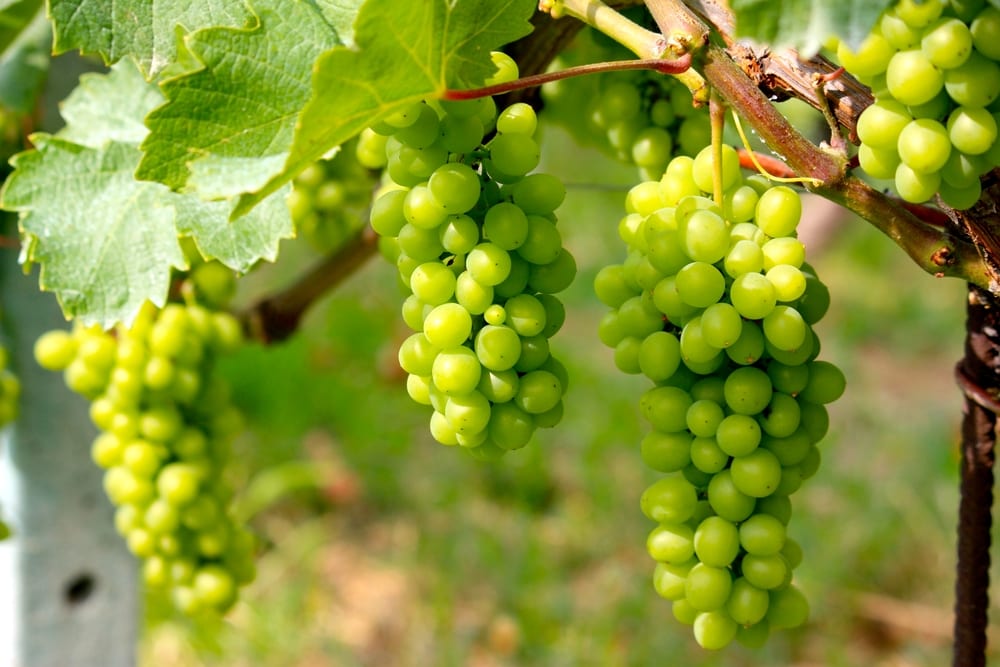
Italian Wines: Tips for Ordering Wine in Italy, Decoding Labels & More
July 5, 2023
One of the greatest pleasures of eating in Italy is trying the country’s wine. It’s not only Italy’s national drink, Italian wines are also a national passion. With more than 1 million wine-growers around the country, Italians drink more wine than anyone else in the world.
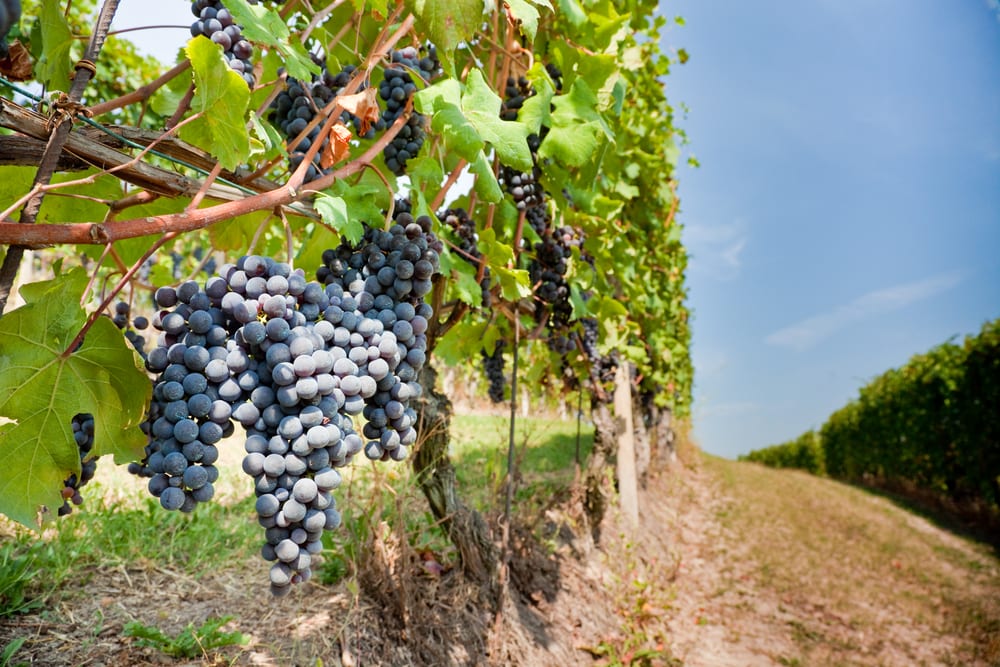
Drinking wine in Italy is an egalitarian pursuit. Since practically everyone drinks wine, it’s not expected that only true connoisseurs will be ordering bottles. Along with the fact that Italy boasts some of the best wines in the world, that open-to-everyone attitude also makes Italy one of the best places to try out different varietals, even if you’re not an expert! And wine isn’t the only thing Italians drink; check out our blog on how to drink like an Italian to get the full run-down of Italian libations.
If you want to get the most out of drinking wine in Italy, here are our top tips:
How to decode an Italian wine label
Although Italian wine labels can look a little confusing at first, they’re pretty simple, and read a lot like French wine labels. At the top of the label, or in the biggest letters, you’ll usually see the name of the grower (in the example on the right, Giuliano Ruggeri). After that generally come the names of the grape and region (here, the region is Montefalco). And beneath that, the vintage year, if it’s not a blend. Depending on the wine, there should also be one of the below labels: DOCG, DOC, IGT, or VdT (or it might be spelled out, as in the example to the right).

Know your DOC from your DOCG from your…
While it might look like alphabet soup, these different labels show the wine’s classification. In Italy, the strictest classification is DOCG (Denominazione di Origine Controllata e Garantita); these wines have to be made in DOCG-protected zones and adhere to stringent regulations. Brunello di Montalcino, for example, has DOCG protection.
The second-strictest classification is DOC (Denominazione di Origine Controllata). Like DOCG wines, DOC wines have to be made in specific zones and with particular regulations. It’s on par with France’s AOC classification (Appellation d’Origine Controlee). The next step down is IGT (Indicazione di Geografica Tipica), which describes a wine grown a particular region, but can describe any blend. The loosest regulations are for VdT wines (Vino da Tavola), and for these, the only criteria is that they have to be made somewhere in Italy. Italy has a similiar classification for food that you can read about in our article on the DOP foods of Italy.
A common mistake is to assume that the strictest labels apply to the “best” wines, and vice versa. In fact, some of Italy’s best wines aren’t DOCG or even DOC. The famous “Super Tuscans,” for example, belong to the IGT category.
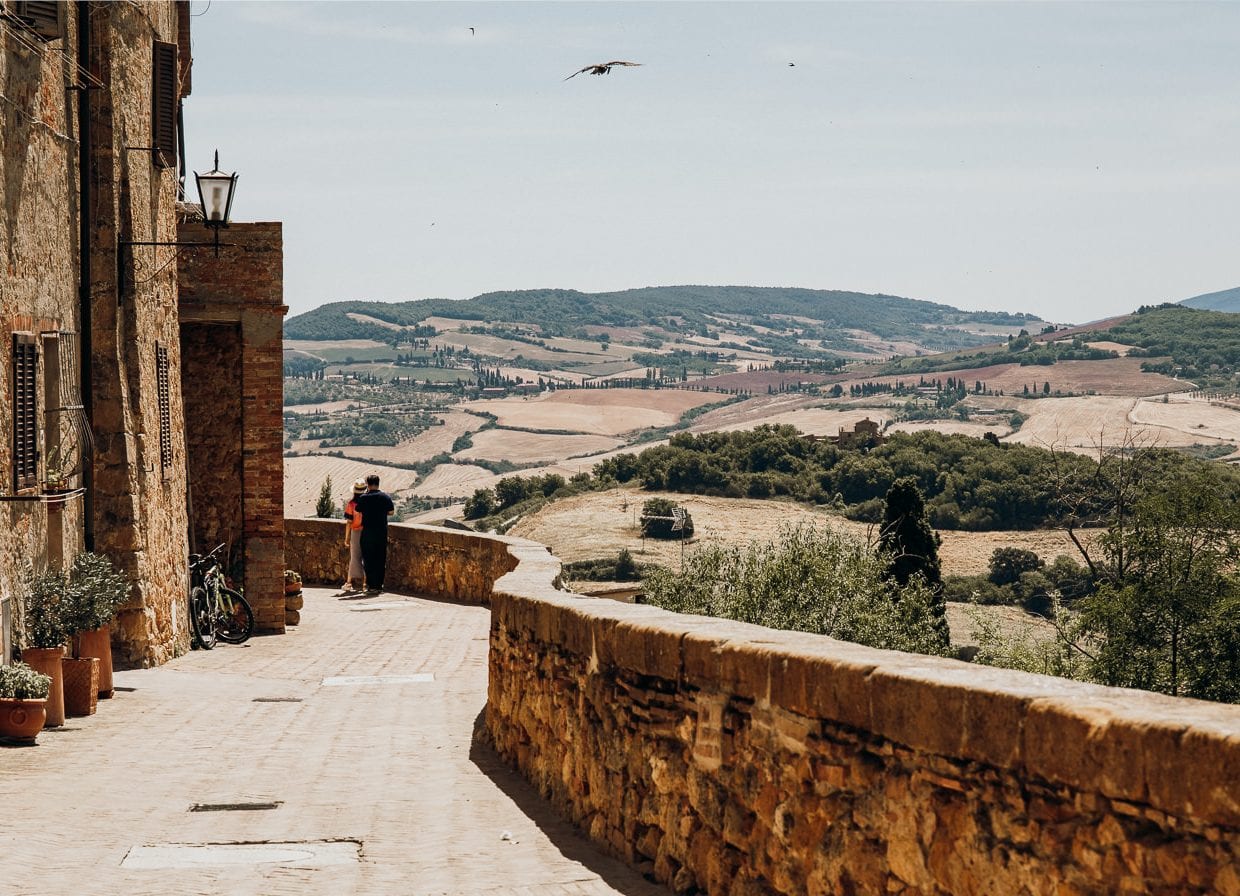
Some of the most well-known Italian wines come from the region of Tuscany.
Key vocab for ordering and buying Italian wines
Sure, lots of servers and sommeliers speak enough English to get by. But if you’re navigating a wine store or a wine menu on your own, a few little words can be a big help. Not to mention, knowing the Italian makes it fun!
The most important word? “Vino” (wine), of course! To describe what kind of wine you want, just put the adjective after the noun.
“Vino rosso”: red wine
“Vino bianco”: white wine
“Vino rosato”: rosé wine
“Vino amabile”: a medium-sweet wine
“Vino dolce”: sweet wine
“Vino secco”: dry wine
“Vino abboccato”: semi-dry wine
“Vino corposo”: a full-bodied wine
“Vino aromatico”: aromatic wine
“Vino frizzante”: semi-sparkling wine
As for reading the label, “azienda” means estate, “anno” is the year, and “produttore” is the producer. “Gradazione alcolica” is the alcohol percentage, and if you see “imbottigliato all’origine,” it means the wine was bottled by the producer. “Vendemmia” means harvest (i.e. the vintage), and “vitigno” means “vine.”
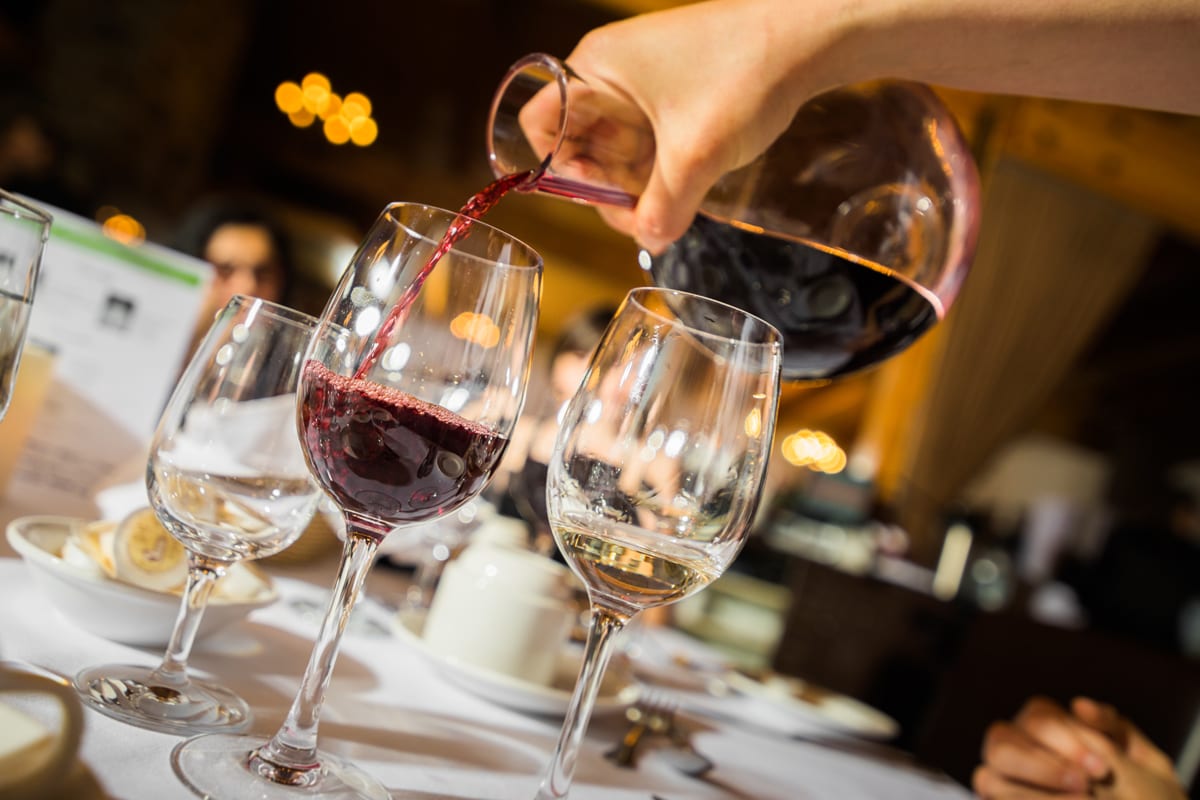
Wine etiquette in Italy
Tasting wine at a restaurant
For the most part, the etiquette of ordering and drinking wine in Italy is the same as it is elsewhere. If you’ve ordered your wine in a restaurant from a wine list, then the procedure will be the same as it is back home. The server will bring the bottle to the table. Although establishments used to assume that the man at the head of the table would taste the wine, now, most don’t. Instead, the server will ask, “Chi assaggia?” (“kee ahss-AHG-ah?”), meaning “Who tastes?” Simply point to the person to do the tasting. The server will show the label to him or her, open the bottle, and pour a small amount into his/her glass to taste.
If you’re the “taster,” remember that you’re not really tasting the just-opened bottle to check if you like it (although, if you do, murmurs of “Mmm, buono. Grazie” are always appreciated), but to see if it’s gone “off.” Although there is some discussion on the etiquette of this, in general, if the wine hasn’t spoiled, then you shouldn’t really send it back.
Pouring wine
When it comes to pouring the wine, remember that in wine culture, and in Italy, glasses are usually filled to the halfway point or just under—not to the brim. And in more-casual restaurants (the kind that don’t have big wine lists, for example, but a house wine only), you might not even get wine glasses. In that case, you’re expected to use the same glass for both water and wine, switching on and off as you go… hence not overfilling your glass with either beverage to begin with!

Make sure not to pour your wine glass too full.
Consider the house wine
Small, laid-back trattorie and other restaurants might not have wine lists at all. In these cases they will still have a house wine or two. As you might guess, house wines tend to be on the cheaper side (for both the establishment and the consumer—it’s not uncommon to see a liter of house wine go for about five euros). So it often isn’t the best wine you’ve ever had. However, you often get genuine diamonds in the rough.
You see, Italian house wines tend to be locally grown and produced. They vary widely depending on region, year, weather, and even restaurant. One of the most magical experiences is finding a little hole-in-the wall whose house wine is knock-your-socks-off good. Our favorites are a closely guarded secret but if you want to find your own, just remember not to turn your nose up when the waiter offers you house wine!
To try a variety of Italian wines, go to an enoteca
If you really want to taste a number of varieties, on the other hand, you’ll have to head to an enoteca, or wine bar. At these establishments, the wine lists tend to be long and separated regionally and the servers well-informed. The food, rather than being the main event, is a mere detail, meant to accompany your glass (or two, or three) of wine. Florence has some particularly good enotecas. For trusted recommendations, check out this list of top wine bars in Florence from the experts at Devour.
Insider’s tip: Florence also has an incredible – and unusual – history of wine windows. Unique to the Tuscan city, these are openings that lead out onto the street with the sole purpose of serving wine. Invented during the Plague – over 400 years ago! – many have been revitalized and are once again in use today.
Some classic Italian wines to know
Italian wines, like Italian food, are intensely regional. Some, though, are particularly famous, and therefore more widely available outside their home regions. We’re working on a complete guide to various Italian wine regions, but until we finish it, here are some varieties you should know:
Barolo
The most expensive wine produced in Italy, DOCG-protected Barolo is made from the Nebbiolo grape and comes from the northern region of Piedmont. It’s known as a particularly rich, full-bodied red.
Asti Spumanti
One of the most famous white wines in Italy, this is a sparkling variety that also hails from Piedmont.
Chianti
Made in the area of Chianti in Tuscany, this red wine comes at least 80% from the Sangiovese grape. Chianti is one of the best wine regions for both quality and accessibility. To learn more about it check out our post on the best wine regions of Tuscany.
Brunello di Montalcino
With few rivals in Italy, this DOCG-classified, Montalcino-made wine comes 100% from the Sangiovese grapes and historically has been considered Tuscany’s number-one wine.
Super Tuscans
From (you guessed it!) Tuscany, these wines are any that don’t adhere to the region’s usual blending laws, meaning they vary greatly. Some, though, are among the most expensive and renowned in the region.
Prosecco
A sparkling white wine produced in northern Italy, Prosecco is a well-known Veneto wine and favorite pre-dinner drink.
If you love Italian wines as much as we do, you should check out our Tuscany day trip from Florence. This best-selling tour takes you to visit two wineries to see how some of the best wines in Italy are made. You’ll also enjoy a full farmhouse lunch, a stroll around Siena, and all the wine tastings you want!
by Walks of Italy
View more by Walks ›Book a Tour

Pristine Sistine - The Chapel at its Best
€89
1794 reviews

Premium Colosseum Tour with Roman Forum Palatine Hill
€56
850 reviews

Pasta-Making Class: Cook, Dine Drink Wine with a Local Chef
€64
121 reviews

Crypts, Bones Catacombs: Underground Tour of Rome
€69
401 reviews

VIP Doge's Palace Secret Passages Tour
€79
18 reviews

Legendary Venice: St. Mark's Basilica, Terrace Doge's Palace
€69
286 reviews









